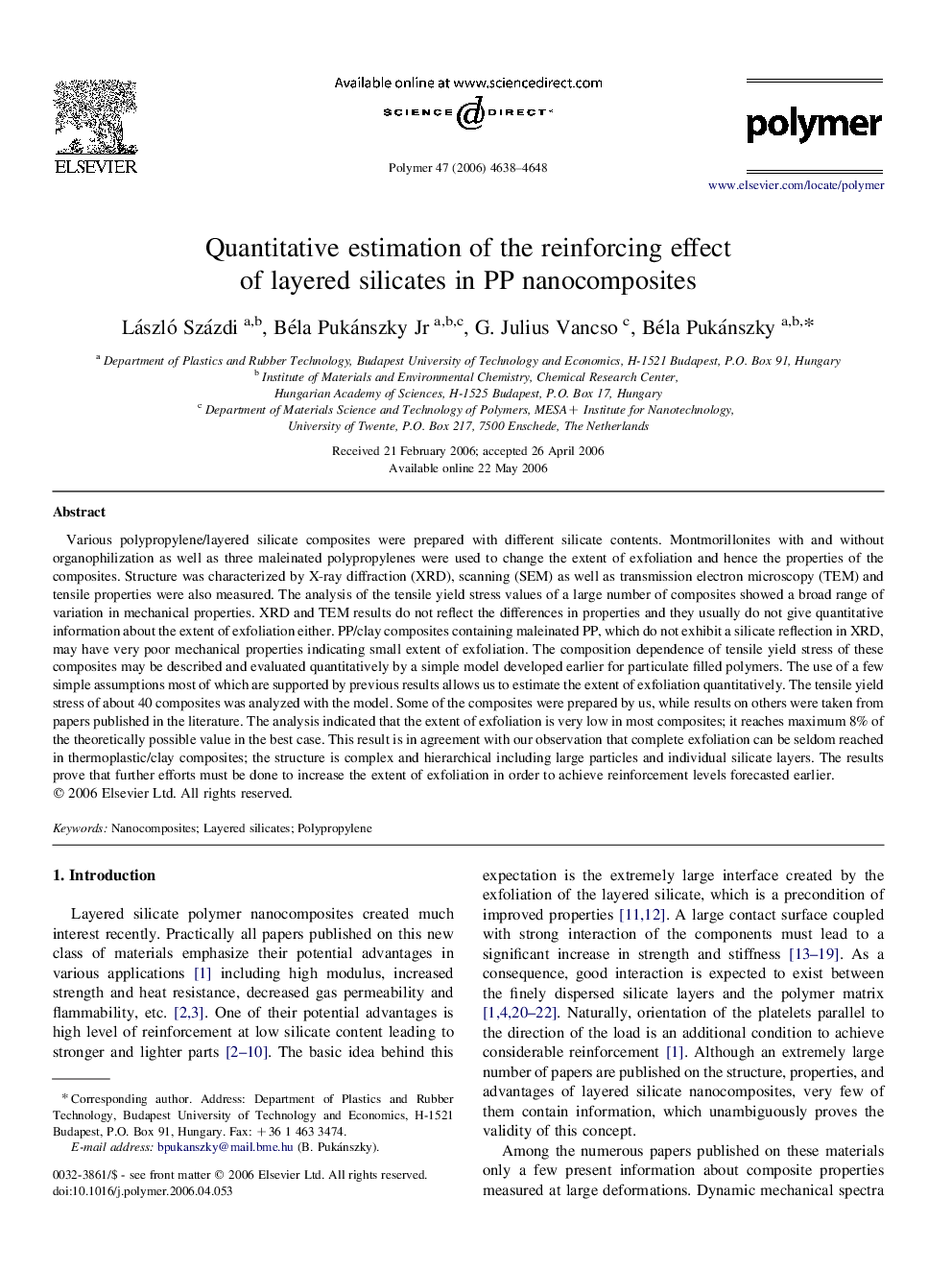| Article ID | Journal | Published Year | Pages | File Type |
|---|---|---|---|---|
| 5189505 | Polymer | 2006 | 11 Pages |
Abstract
Various polypropylene/layered silicate composites were prepared with different silicate contents. Montmorillonites with and without organophilization as well as three maleinated polypropylenes were used to change the extent of exfoliation and hence the properties of the composites. Structure was characterized by X-ray diffraction (XRD), scanning (SEM) as well as transmission electron microscopy (TEM) and tensile properties were also measured. The analysis of the tensile yield stress values of a large number of composites showed a broad range of variation in mechanical properties. XRD and TEM results do not reflect the differences in properties and they usually do not give quantitative information about the extent of exfoliation either. PP/clay composites containing maleinated PP, which do not exhibit a silicate reflection in XRD, may have very poor mechanical properties indicating small extent of exfoliation. The composition dependence of tensile yield stress of these composites may be described and evaluated quantitatively by a simple model developed earlier for particulate filled polymers. The use of a few simple assumptions most of which are supported by previous results allows us to estimate the extent of exfoliation quantitatively. The tensile yield stress of about 40 composites was analyzed with the model. Some of the composites were prepared by us, while results on others were taken from papers published in the literature. The analysis indicated that the extent of exfoliation is very low in most composites; it reaches maximum 8% of the theoretically possible value in the best case. This result is in agreement with our observation that complete exfoliation can be seldom reached in thermoplastic/clay composites; the structure is complex and hierarchical including large particles and individual silicate layers. The results prove that further efforts must be done to increase the extent of exfoliation in order to achieve reinforcement levels forecasted earlier.
Related Topics
Physical Sciences and Engineering
Chemistry
Organic Chemistry
Authors
László Százdi, Béla Jr, G. Julius Vancso, Béla Pukánszky,
